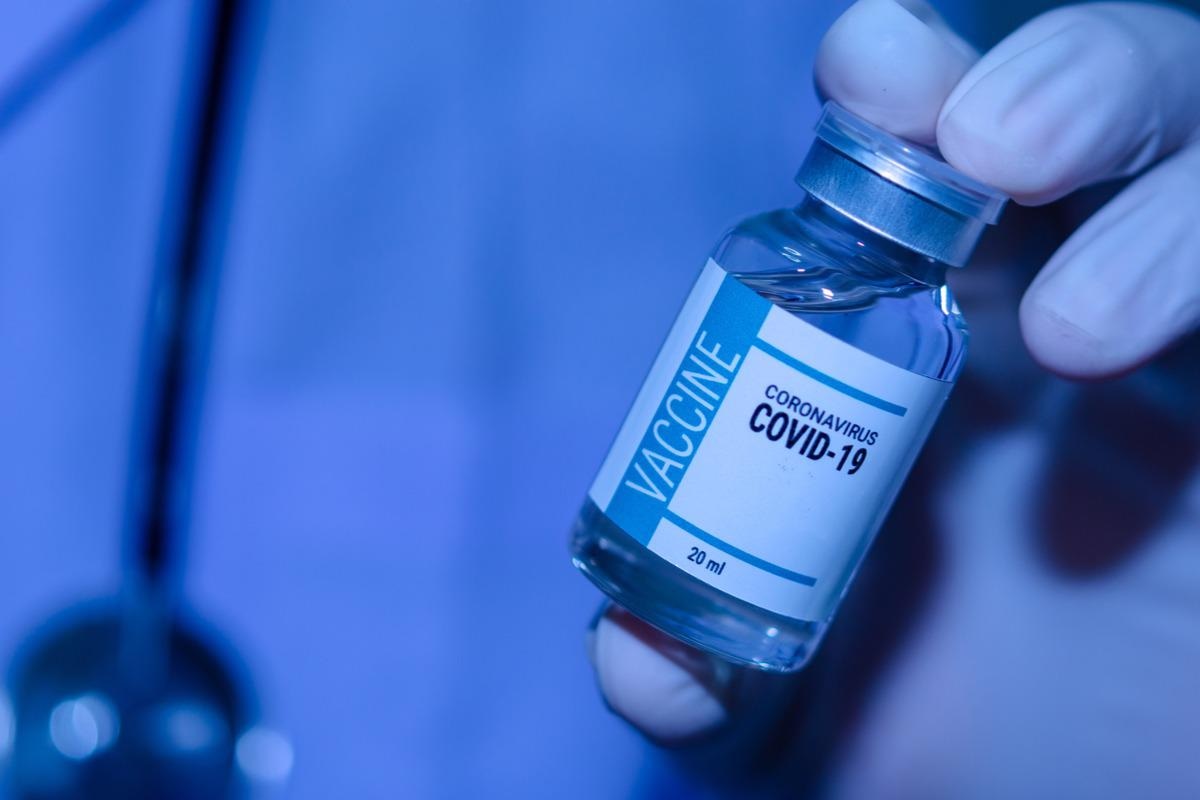The coronavirus disease 2019 (COVID-19) pandemic, caused by the severe acute respiratory syndrome coronavirus 2 (SARS-CoV-2) coronavirus, has become a global health emergency. Since it was first reported in Wuhan, China, at the end of 2019, there have been over 267 million cases and over 5.28 million deaths worldwide, with no apparent short-term solution.
 Study: Preclinical Immune Response and Safety Evaluation of the Protein Subunit Vaccine Nanocovax for COVID-19. Image Credit: khunkorn/Shutterstock
Study: Preclinical Immune Response and Safety Evaluation of the Protein Subunit Vaccine Nanocovax for COVID-19. Image Credit: khunkorn/Shutterstock
SARS-CoV-2, like SARS-CoV, uses angiotensin-converting enzyme 2 (ACE2) as the entry fusion receptor via its viral spike protein, a homotrimeric complex of spike (S) proteins. The S protein is a homomeric class I fusion protein that consists of the N-terminal S1 subunit, which contains the receptor-binding domain (RBD), and the C-terminal S2 subunit.
mRNA-lipid nanoparticles that encode the S protein, viral vectored DNA-based vaccines (particularly recombinant adenoviruses), and subunit vaccinations that contain pure S protein have all been proposed as potential vaccines against SARS-CoV-2.
According to the World Health Organization (WHO), there are 102 and 185 S protein-targeted vaccines in clinical and preclinical development, respectively. Recombinant protein vaccines, inactivated vaccines, viral vector-based vaccines, and DNA vaccines to prevent virus infection are among the vaccine options produced or in development.
In a study published in Frontiers in Immunology, researchers have developed Nanocovax, a COVID-19 subunit vaccine based on recombinant protein technology to produce the extracellular (soluble) portion of the S protein of SARS-CoV-2. In brief, a gene encoding the S protein was created using the S protein extracellular domain's wild-type sequence.
The construct was transfected into Chinese hamster ovary (CHO) cells, and the cells with the highest S protein expression were named CHO-spike cells. SARS-CoV-2 S protein was then absorbed into an aluminum hydroxide gel adjuvant (Alhydrogel®; Croda, Denmark). The authors describe the Nanocovax vaccine's preclinical studies and demonstrate its immunogenicity, efficacy, and safety in mouse, hamster, non-human primate, and rat models.
The study
To test the immunogenicity of Nanocovax, BALB/c mice were injected twice with varying doses (25, 50, 75, and 100 g) of vaccine absorbed with 0.5 mg of Al3+ (aluminum hydroxide adjuvant). On the 14th post-priming injection day, total specific IgG levels were determined using ELISA. Syrian hamsters were vaccinated with various doses of Nanocovax (25, 50, 75, and 100 g) to assess its immunogenicity further. The antibodies were discovered on days 28 and 45 following priming.
Northern pig-tailed macaques were used to test the Nanocovax vaccine's immunogenicity. Monkeys were given Nanocovax at various dosages twice through Intramuscular injection or PBS as a negative control. Blood samples were taken on days 14, 28, and 45 after the booster injection on day 7 to assess antibody levels.
The levels of S protein-specific IgG in the 25-, 50-, 75-, and 100-g groups were marginally higher on day 28 after priming injection than in the control group, at 39.02-fold, 68.58-fold, 87.82-fold, and 97.37-fold, respectively, than in the control group. On day 45, all vaccinated groups had considerably greater levels of S protein-specific IgG in their sera than the control group (IgG levels in 25-, 50-, 75-, and 100-g-vaccinated monkeys were 126.5-fold, 129.1-fold, 159.95-fold, and 205.12-fold, respectively).
Three vaccinated hamsters from each study group showed no evidence of weight loss after being challenged with a high or low amount of the SARS-CoV-2 virus; they demonstrated weight maintenance for 1 to 2 days after infection, and weight growth maintained from day 3 to day 14 after infection (11.8% to 14.5%). Shortness of breath, ruffled fur, and lethargy were not detected in vaccinated hamsters who received low and high doses of SARS-CoV-2. On days 1 and 2 after the virus exposure, three control hamsters developed ruffled fur, lethargy, and sweating.
Two of the three animals lost a lot of weight on day 7 or 8 after infection (13.2%–16.4%) and slowly gained weight after the challenge test on day 8 or 9. On day 28, the lungs of vaccinated and non-vaccinated hamsters were collected for real-time RT-PCR to detect SARS-CoV-2. The results reveal that after 14 days of challenge with viral doses of 2 105 TCID50 and 1 103 TCID50, no SARS-CoV-2 virus-specific RNA was found in lung samples of the vaccinated group [cycle threshold (Ct) = 30.33, and Ct = 31.22].
Implications
This study looked at the Nanocovax vaccine's protective effectiveness in hamsters. There were no signs of SARS-CoV-2 viral infection, such as shortness of breath, ruffled fur, or lethargy. Furthermore, the weight loss in the control hamster groups was larger than in all vaccinated mouse groups. Real-time RT-PCR was used to detect SARS-CoV-2 virus-specific RNA in the non-vaccinated groups' lung samples on day 28. Single- and repeat-dose toxicity studies were used to assess the Nanocovax vaccine's safety.
At four doses (25, 50, 75, and 100 g), the Nanocovax vaccination had neither single- or repeat-dose toxicity effects in mice (Mus musculus var. albino) and rats (Rattus norvegicus). Based on animal models, including a non-human primate model, the Nanocovax vaccine proved immunogenicity and safety. These findings back up the Nanocovax vaccine's clinical phase I and phase II development.